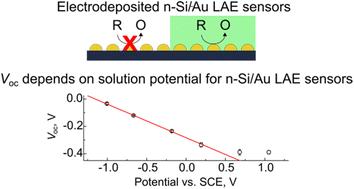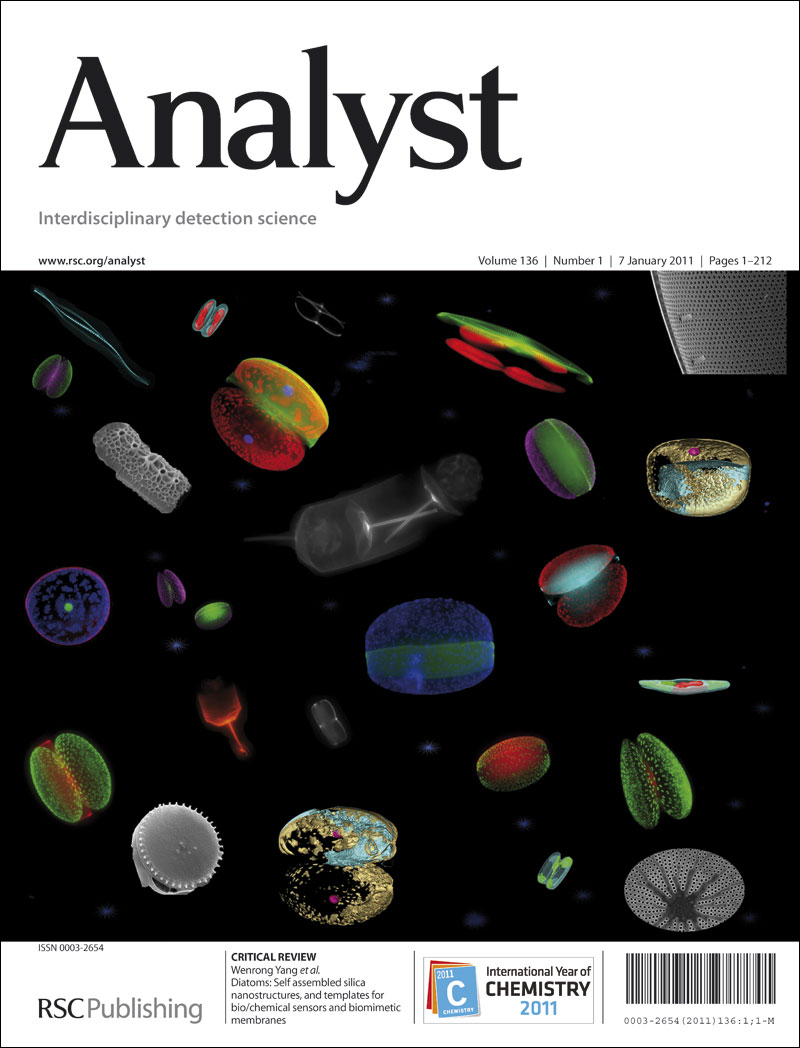n-Si/Au 可寻址光电化学传感器中光电电压的特征和理解。
IF 3.3
3区 化学
Q2 CHEMISTRY, ANALYTICAL
引用次数: 0
摘要
我们发现,n-Si/Au 光电极显示的光电压与半导体/液体结一致,而不是埋入结,这与我们以前对这些传感器中光电压如何产生的理解相反。本文章由计算机程序翻译,如有差异,请以英文原文为准。


Characterizing and understanding the photovoltage in n-Si/Au light-addressable electrochemical sensors†
Here, we characterize the photovoltage of n-Si/Au light-addressable electrodes (LAEs) over a range of solution potentials from ca. −1 to +1 V. We find that the n-Si/Au photoelectrodes show photovoltages consistent with a semiconductor/liquid junction in contrast to a buried junction, which opposes our previous understanding of how photovoltage originates in these sensors.
求助全文
通过发布文献求助,成功后即可免费获取论文全文。
去求助
来源期刊

Analyst
化学-分析化学
CiteScore
7.80
自引率
4.80%
发文量
636
审稿时长
1.9 months
期刊介绍:
"Analyst" journal is the home of premier fundamental discoveries, inventions and applications in the analytical and bioanalytical sciences.
 求助内容:
求助内容: 应助结果提醒方式:
应助结果提醒方式:


